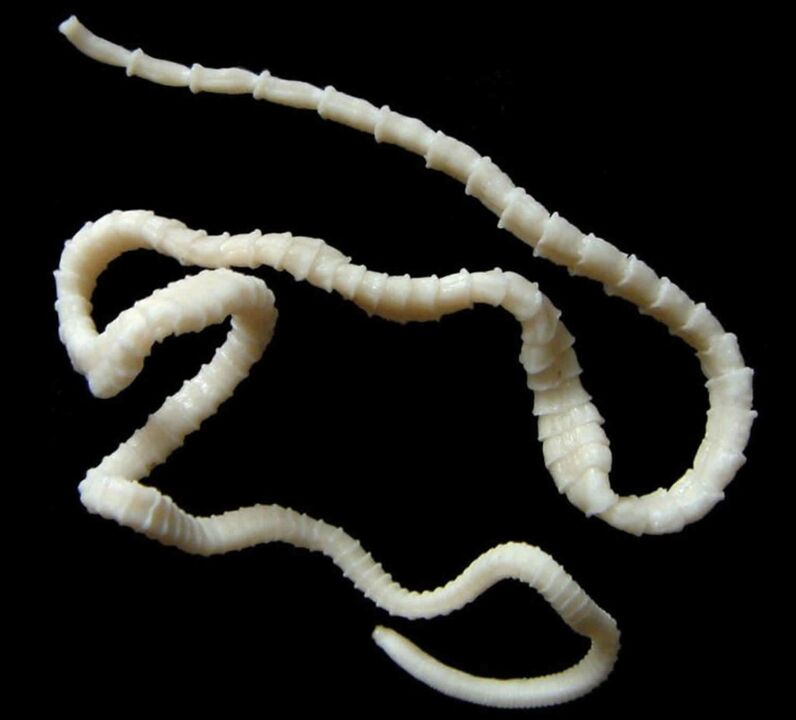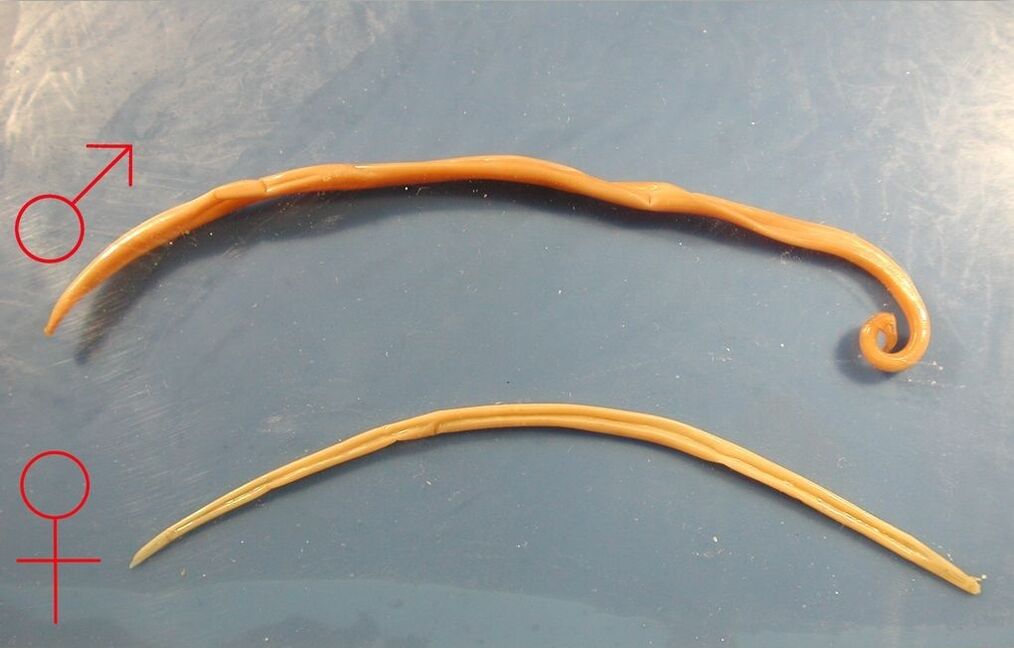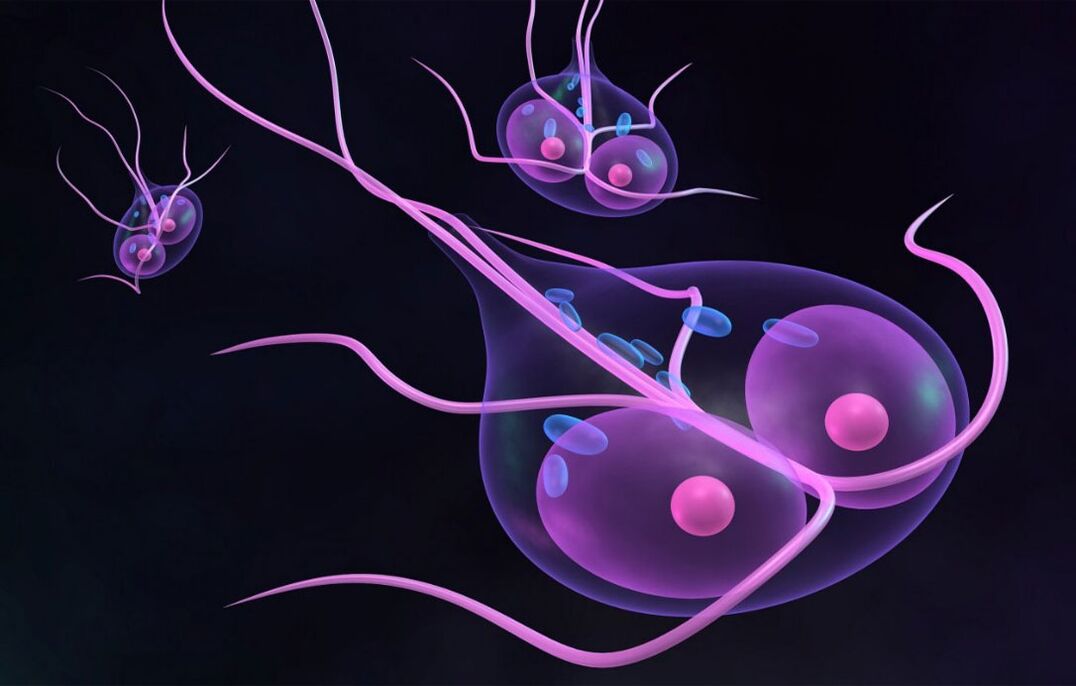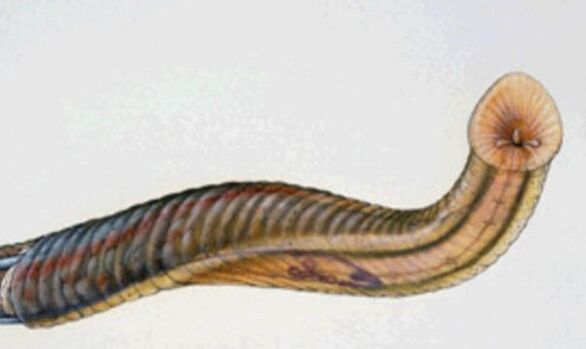Intestinal or other worms that occur in humans are an invasion that affects the entire body. This disease is caused by an infection caused by the eggs and larvae of the worms and is characterized by a number of specific symptoms.
Diagnosis is made by a number of tests, both stool and blood. Worms that occur in the abdominal cavity and other organs occur in adults and children, may appear in the anus, in the stool, or do not manifest in any way.
Cause
The worms in the intestines are spread mainly through the faeces-oral route, meaning that the eggs of the parasites or the larvae of the worm must be swallowed for the infection. The unpleasant feature of this invasion is that certain types of worms in children and adults remain viable for a long time outside the host (e. g. , water, soil).
The eggs of parasites deposited by adults there can infect for several months. This feature leads to the fact that certain types of worms are very common in children and adults.
The main ways of infection are:
- Infection using untreated water, which can be in a well, a natural reservoir, and can even flow out of the tap. In humans, almost all intestinal parasites survive and multiply in water, so it is worth drinking bottled water. In areas with unfavorable health conditions, the water in the well should only be used after prolonged boiling;
- The appearance of the worm in the baby's bottom can occur due to the consumption of poorly washed vegetables. If manure was used to fertilize the soil infected with the worms, their larvae, eggs, and adults would appear and survive in the soil for a long time. The eggs, along with the soil grains, fall on the vegetables. If such a vegetable is badly washed, they enter the host and cause a helminthic invasion in man;
- After consuming contaminated meat, fish or poultry, bloating and other characteristic symptoms of infection may occur. If an animal, bird, or fish has been infected with a worm during its lifetime, its meat is likely to be infected, while parasites (such as fish) can easily take root in the human body. They can only be disposed of as a result of careful and prolonged heat treatment of the meat (cooking or frying at maximum temperature). You can also defeat the invasion by freezing. But since most modern household freezers can provide a maximum temperature of about 8 degrees, meat, fish, or poultry must be kept there for at least a week;
- Signs of an infection caused by worms can occur in humans if they come in contact with a pet. There are almost always worms in the stomachs of dogs and cats walking down the street (domestic cats are usually uninfected). During the performance of hygiene procedures, the animal spreads the worm's eggs from the anus to the entire coat. If you kiss such an animal or do not wash your hands after contact with it, worms can enter the human body as animal invasions take root and multiply in the human body;
- A person may notice bloating and other signs of the presence of helminths, even if they are swimming in an infected pond. This is a fairly rare method, but infection is possible;
- Helminthiasis is transmitted in humans from one individual to another through surfaces, towels, and bedding. Eggs and larvae migrate from the skin of an infected person to the surface or tissue and from there migrate to the skin of a healthy person by touch. After that, there is a chance that they will enter the oral cavity of a healthy person and develop an infection.
It is worth noting that many types of intestinal parasites are common in groups of children. This is because many children do not care too much about hygiene, and many surfaces in kindergartens are covered with worm eggs, which can be seen in the photo below, even if only one child was initially ill.
For this reason, the primary responsibility of parents is to explain to the baby that all kinds of worms that occur in humans are dangerous and can remain on the skin of the hand and get into the mouth from there. That is why good hygiene is important. A video about the spread of worms in women, men and children and the peculiarities of their development can be found at the end of the material.
Types
Some patients are interested in the color of the worms and how to visually determine what is in the stool? Most often, these are white or light worms, although sometimes transparent worms are also found in humans. They are flat or round, sometimes with two dark food channels on the side.
- The largest human worms are called tapeworms. The bull nematode is the largest in this group. According to scientific research, they can live up to 40 years in the gut and reach several meters in length.
- Roundworms are the most common type of pest, which is a nematode. Can such individuals be very large? The length of females is about 25 cm, males - 12 cm;
- Pinworms are more common in children than in adults. These are small individuals, similar in description to cylindrical worms but smaller. The largest pinworm barely reaches 10-12 cm;
- Giardia is the smallest species of parasite. It's quite common. If it is found in the stool, you need to think about what to do with the worms and start choosing a treatment;
- Trichinosis invasions are characterized by the most severe course, with fever and facial edema. Such invasions are called Trichinella nematode invasions.





The most common individual types have common characteristics and are seen in the stool. Therefore, the feces of a worm man can be distinguished from the feces of uninfected people.
Localization
Some people who suspect they are invading are interested in where the worms are in the human body? Although worms are traditionally thought to occur in the gut in the human body, this is not entirely true.
Almost all types of worms that occur in humans can develop in many organs and systems, which is related to the specifics of their migration, when larvae hatched from eggs in the gut enter the bloodstream and spread throughout the body.
They enter the human body through the mouth, but they can occur in the following places:
- Subcutaneous parasites are not very common tropical parasites carried by insects (cetaceans, specific tropical mites, etc. ). Subcutaneous parasites are almost never found in the middle lane, but there is a risk of infection with them on a tour. Such parasites localize under the skin only in the early stages of their life cycle and then migrate to the muscles;
- A common place where localization is observed in women is the vagina, the uterus. They may crawl out of the anus or infect the reproductive system during the migratory phase;
- Worms can also be found in the ears of a baby or an adult, as larvae often infect the ear-nose-throat organs (including the throat);
- Many worms choose the place of localization of the digestive system and intestines. There they have enough food (blood and serum) and oxygen to maintain a normal life. It is usually easier to treat intestinal parasites than others. But even if they were initially in the stomach of man, over time they can infect other organs;
- Signs of worms in the lungs can be confused with the characteristic symptoms of pleurisy or pneumonia. Nevertheless, this is a common localization site for worms, so it is important to diagnose their presence in a timely manner;
- If parasites appear in the brain, the nervous system is damaged. It can manifest as cramps, irritability, unwarranted anxiety, etc. ;
- If worms appear in the heart in humans, tachycardia, arrhythmias, and more are possible. In particularly severe cases, heart failure develops;
- Wormworms are also common in the liver, where they enter primarily from the intestines through the portal vein.
As can be seen from the above, patients who are wondering where worms live in humans should consider not only the type of invasion but also the stage of infection.
Complications
Is it important to know what worms lead to and what happens if you don’t treat them? Worms cause general intoxication of the body, which can be very pronounced.
Allergic-type symptoms also appear because the immune system produces histamines to protect against foreign invasion. In this case, you need to remember what an allergic rash looks like with helminths - these are medium-sized pink spots, sometimes hives, itching is usually missing.
As with localization in the liver and when found in other organs, the tapeworm damages the mucous membranes in humans or other parasites and causes local inflammatory processes in a small area.
This can cause an abscess (in the case of the liver, pus pus into the abdominal cavity and sepsis if left untreated).
As with bronchial and lung damage, coughing often occurs. Bronchitis, pleurisy, or pneumonia then develops and must be treated with antibiotics, despite this reaction to the invasion.
With the localization of parasites in the vagina, chronic diseases and microflora disorders can worsen. It is believed that such a phenomenon can lead to infertility.
Symptoms
The symptoms of worms in humans are varied, but are common to almost all types of parasites. However, chronic and acute infections can have different symptoms in adults. In the case of an acute infection, the following symptoms of the disease are characteristic:
- Elevated temperature in normal general condition (up to 38 degrees);
- Chills and skin-like symptoms (rash);
- When the larvae are localized in the lungs or bronchi, the symptoms in the body are expressed by a cough;
- Inflammatory processes are signs of the presence of worms in the human body, resulting in the growth of lymph nodes;
- Worms and allergies are associated in the individual, so signs of the appearance of worms in the form of rashes and allergic reactions are possible.
But most often, the symptoms of the presence of worms appear in the gut, as the parasite is most often localized there. These are symptoms of infection with worms in an individual, such as:
- Stool problems - constipation or diarrhea, sometimes bloody;
- The first symptoms of worms are anorexia, nausea, aversion to certain types of food, which eventually leads to weight loss;
- In adults, the first signs of worms can be bloating and bloating;
- Over time, abdominal and stomach pain develops that is independent of food intake, intermittent or permanent;
- Worms show symptoms of general intoxication - pallor, drowsiness, chronic fatigue, and so on.
Skin parasites cause specific symptoms in adults and children. The signs of worms are numbness of the limbs, tingling of the skin, headache, dizziness, much less often - fever. In any case, the incubation period of worms in humans is quite long and can last from several weeks to several months.
Because of this, the first signs of worms in a person may not appear soon. And because almost every symptom of the presence of worms can indicate other diseases, often if a person has worms, it only becomes clear when it enters the stool.
Diagnostics
Even if you know the appearance of worms, you may not notice their appearance. Some worms do not appear for a long time, and diagnosis of human worms cannot be performed at home. The following methods are used in laboratories to determine the presence of worms, the symptoms and treatment of which are discussed in this article:
- General blood test. There may be worms in case there are discrepancies. It appears to be severe anemia - a significant reduction in iron and hemoglobin levels. This is due to the fact that worms cause local bleeding in humans, constantly damaging the mucous membranes, and also parasites that feed directly on blood;
- If the worms are in the intestines, their waste products will be present in the feces. What signs of worms are visible in the individual's stool? These are eggs, larvae or even adults of parasites. Although, if you know what worms look like in humans, adults in the stool can be identified independently;
- Regardless of where the worms come from in humans and what worms in humans (protozoa, globular worms, tapeworms), antibodies against them appear in the blood. This is because as soon as a person has worms, the immune system considers them an alien invasion and tries to defend against them by producing antibodies. This method helps determine what types of worms are present and what symptoms to expect, as different antibodies are produced for each invasion.
The latter diagnostic method is particularly good because it allows you to learn about worms at an early stage, identify the types of worms, and learn how to treat worms in humans.
Treatment
Some patients who care about what human worms look like and how they get into the body also want to know how to cure them in an individual. The official medication regimen for the treatment of worms in adults contains a single dose of anthelmintic that affects the entire body if a person is worm.
It is also desirable to repeat the treatment in adults 2-3 weeks after the first application of the drug. Small and large infections need to be poisoned twice to get rid of the larvae completely.
Other treatments are recommended if the worms are in children. Because the drugs are toxic, treatment in adults has a negative effect on the liver. Children are prescribed medications that can be taken on a short (multiple) basis, which reduces the load on the liver.
Some of those who are curious about how to treat worms on an individual opt for folk fighting methods when the worms of adults or children are removed naturally.
A one-to-one mixture of ground pumpkin seeds and honey is believed to be effective against worms if consumed in a tablespoon daily.
Effective treatment is performed by infusions of garlic-milk solution. You can also treat worms in the gut by drinking a similar solution. If a person has worms, the symptoms will get worse in a week.
Prophylaxis
Knowing where the worms come from, where the worms come from, you can define a list of rules that must be followed in order to protect yourself from worms in humans. In order not to ask if I have "worms, " here are some things to do:
- Wash vegetables and fruits thoroughly;
- The meat is thoroughly cooked or fried, and can be frozen for a long time;
- Use only bottled or purified water for drinking;
- Limit contact with pets and regularly prevent helminthic infections;
- Wash your hands regularly, especially after staying in public places.
If infection is suspected, it is recommended that feces be examined regularly for the presence of helminth samples.



























